
It’s not the hard problems that kill a business. It’s the easy ones you ignored.
Every business faces challenges, but it’s rarely the complex issues that bring you down—it’s the simple, obvious problems left unchecked. Profit isn’t a dirty word; it’s the foundation you can’t afford to neglect. Yet many leaders shy away from confronting profitability head-on, letting opportunity slip through their fingers.
Is my business coasting on past wins—while small, fixable problems quietly compound into future crises?
Remember, the bottleneck is always at the top. If leadership doesn’t see clearly, act decisively, and hold themselves accountable, the entire business will suffer. Reputation compounds over time—each decision either builds or erodes it. And your edge? That sharp, unique advantage is yours to own, defend, and sharpen relentlessly.
Complacency and comfort are the silent killers. They disguise risk as stability and lull you into dangerous passivity. This chapter is your blueprint to spot the common traps, protect what matters, and keep your business—and yourself—on the cutting edge. Because in business, survival favors the vigilant, not the comfortable.
If you haven’t challenged your assumptions, pressure-tested your profitability, or sharpened your edge lately, this chapter is more relevant than ever.
Chapter 11, Avoiding the Common Pitfalls, features these 4 fundamental Rules:
- WEEK 43— Rule No. 30: Profit is not a dirty word.
- WEEK 44— Rule No. 47: The bottleneck is at the top.
- WEEK 45— Rule No. 41: Reputation compounds.
- WEEK 46— Rule No. 44: Own your edge.
WEEK 43
Rule No. 30: Profit is not a dirty word.
Why: Because, sustainability depends on profit.
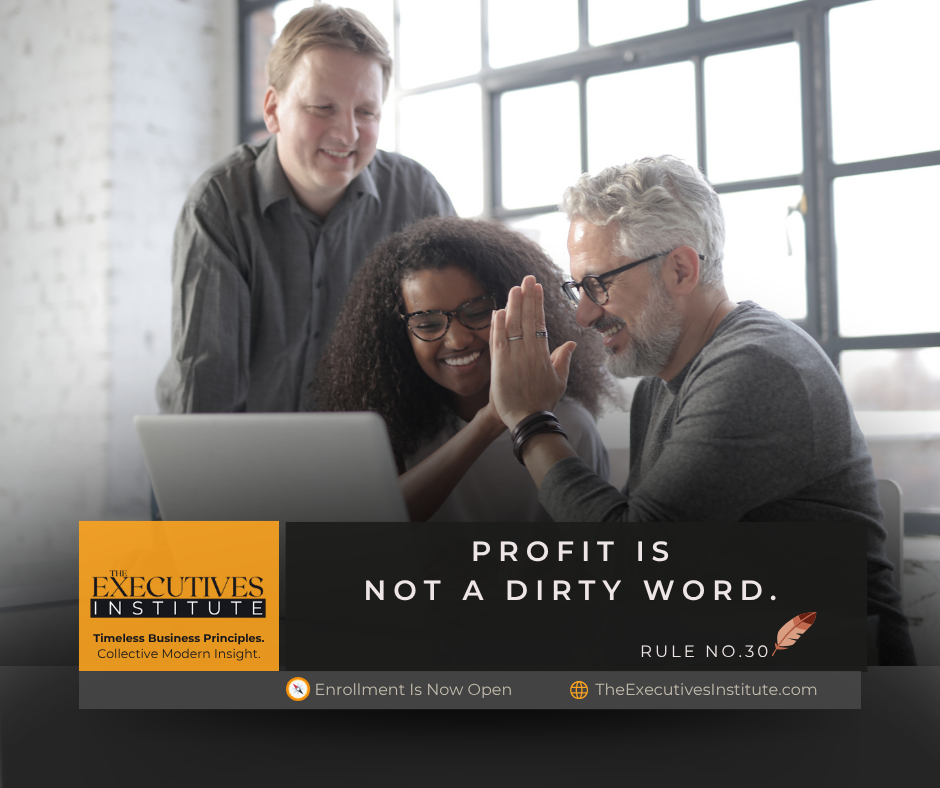
Rule No. 30 SUMMARY ![]()
Profit isn’t a reward you hope for at year-end—it’s a discipline you practice from day one. In too many businesses, “profit” is treated like a dirty word—something to downplay, hide, or sacrifice in the name of growth. But no matter how noble your mission, if your business isn’t sustainably profitable, it won’t last. Profit is not greed—it’s oxygen. Prioritize it. Protect it. Bake it into your system, not just your spreadsheet.
Ask Yourself: Am I treating profit as an afterthought, or am I forcing my business to generate it intentionally every day?
WEEK 43 Action Step: Allocate Profit First: Review your current cash flow and implement a simple “profit first” system this week. Set aside a fixed percentage of every incoming dollar into a dedicated profit account before paying any expenses. Treat this like a non-negotiable bill—profit comes first, everything else adjusts around it.
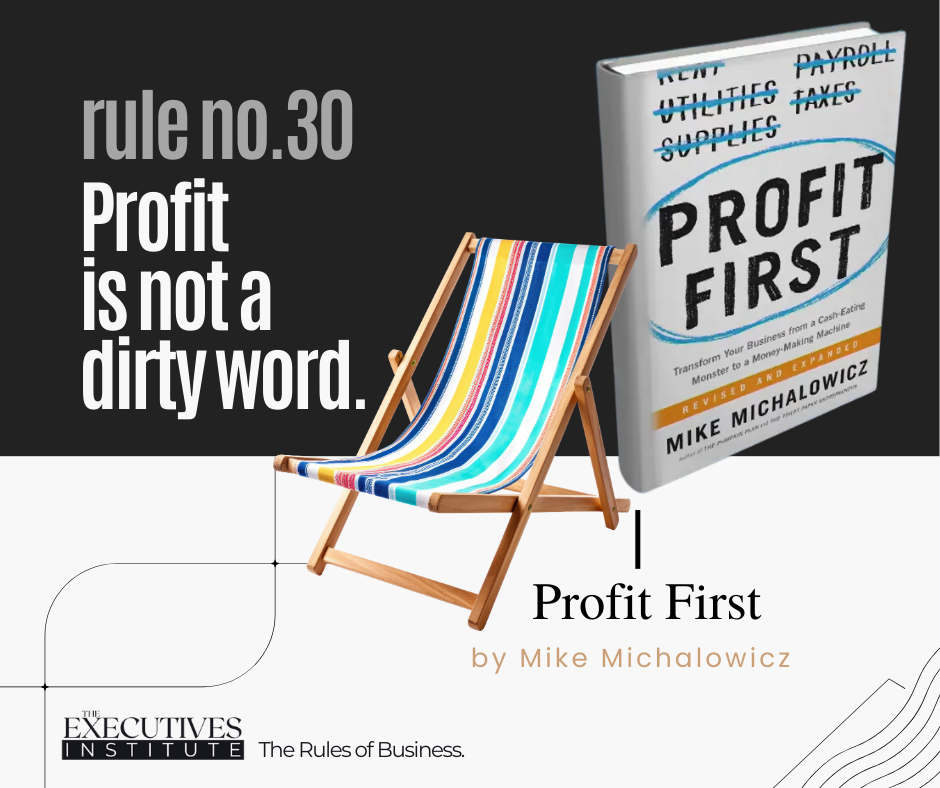
WEEK 43 RECOMMENDED READING: Profit First by Mike Michalowicz
“Your business is supposed to serve you. If it’s not profitable, it’s broken.”
– Mike Michalowicz, Profit First
WEEK 44
Rule No. 47: The bottleneck is at the top.
Why: Because you are often the problem.

Rule No. 47 SUMMARY ![]()
When a team is underperforming, the root cause usually isn’t “down there.” It’s at the top. Culture, clarity, accountability—these flow from leadership. If something’s stuck, stalled, or sideways, odds are high that the real issue starts with the leader. Not the team. Not the market. You.
Strong leadership fixes dysfunction. Weak leadership fuels it.
Ask Yourself: Am I part of the problem I’m blaming on others? What one leadership habit can I change this week to unblock my team and improve results?
WEEK 44 Action Step: This week, identify one recurring problem in your team or organization that keeps surfacing. Trace it up the chain—what part of your own leadership is contributing to it? Then take one concrete action to address it directly, whether it’s clarifying expectations, confronting a difficult conversation, or removing a process bottleneck you’ve allowed to persist.
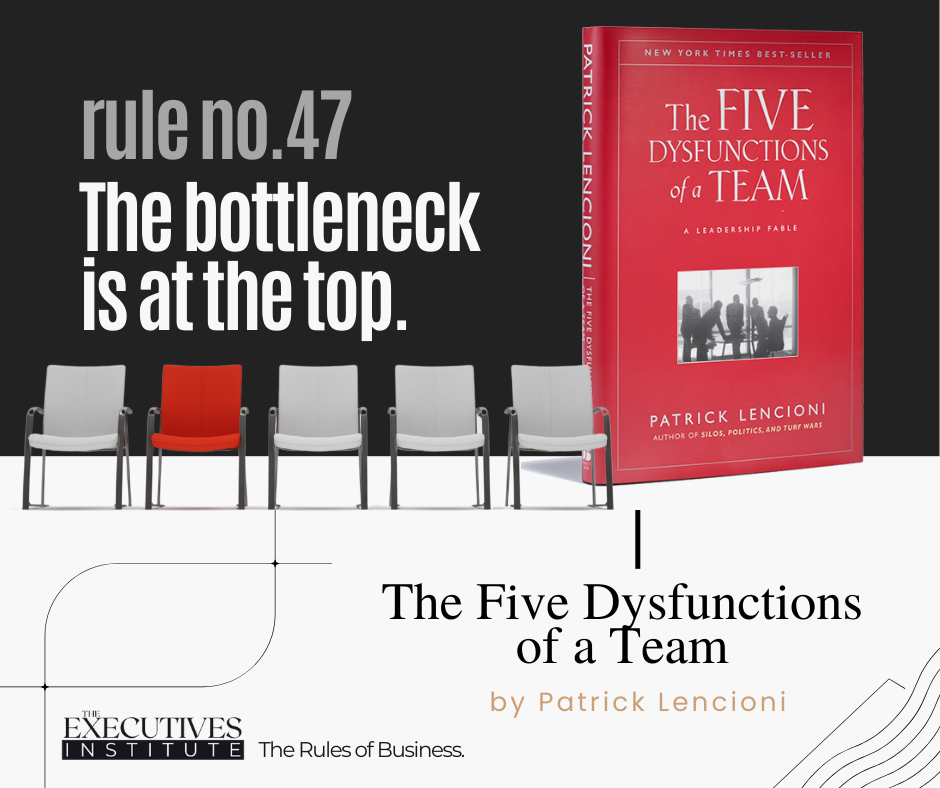
WEEK 44 RECOMMENDED READING: The Five Dysfunctions of a Team by Patrick Lencioni
“If you could get all the people in an organization rowing in the same direction, you could dominate any industry… but you won’t—unless the leader confronts the dysfunction.”
— Patrick Lencioni, The Five Dysfunctions of a Team
WEEK 45
Rule No. 41: Reputation compounds.
Why: Guard your name—it’s your most valuable asset.
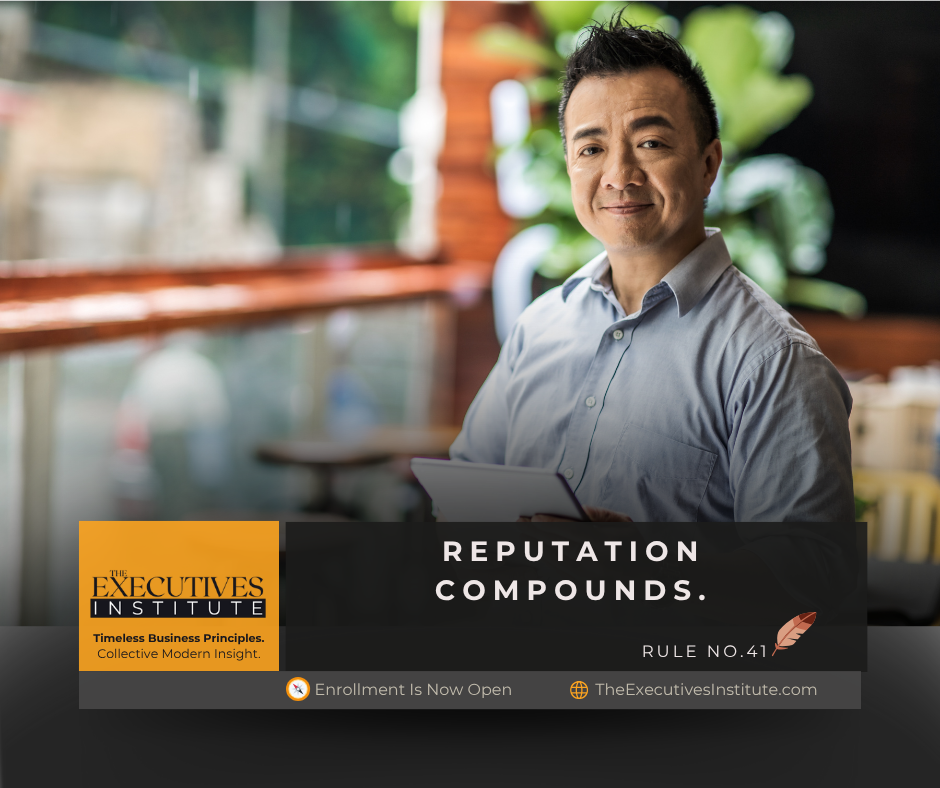
Rule No. 41 SUMMARY ![]()
In business, reputation is rarely built in big leaps—it’s forged in small, consistent moments of credibility, integrity, and delivery. Like interest on capital, your reputation accrues or erodes over time based on the decisions you make, the relationships you honor, and the problems you either solve or ignore. Today’s digital transparency amplifies everything—good and bad. If you’re not actively building your reputation, you’re leaving it to chance.
Ask Yourself: If someone judged my leadership based solely on what they could find online this week, would they trust me—and would I be proud of it?
WEEK 45 Action Step: Audit Your Footprint: This week, list every public touchpoint your company and leadership team have—social media profiles, press mentions, client reviews, LinkedIn posts, website messaging, and even customer service interactions. Identify where your reputation is strong, where it’s neutral, and where it could be actively harming trust. Take one tangible action to improve the weakest point.
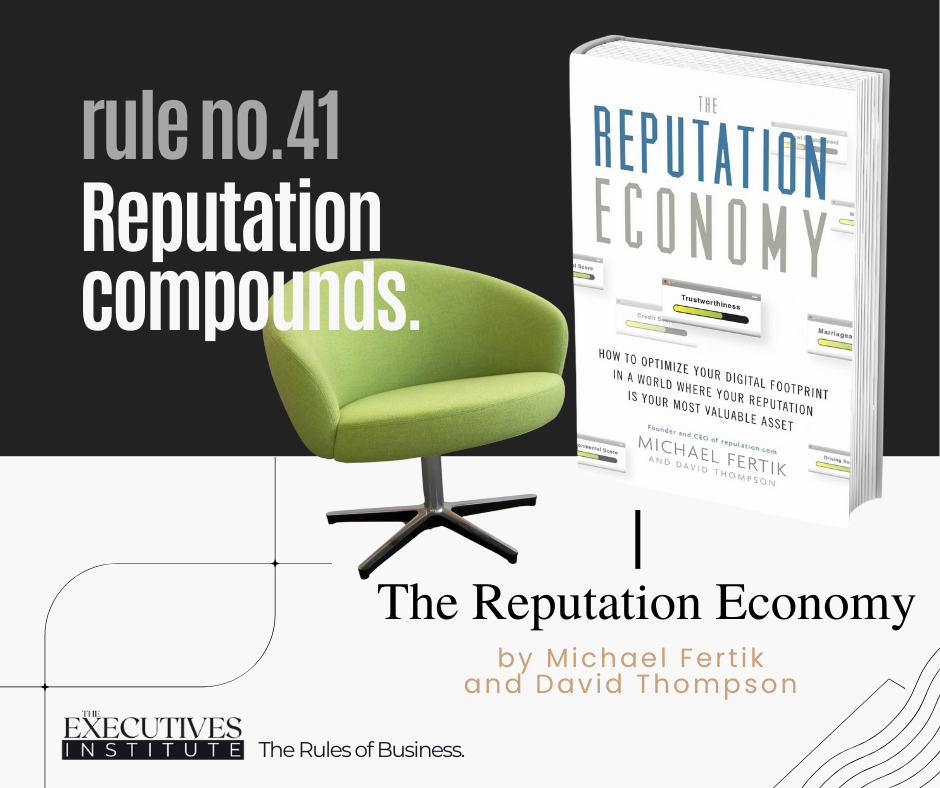
WEEK 45 RECOMMENDED READING: The Reputation Economy by Michael Fertik
“…your greatest asset is how others see you. Not just what you say you are, but what you prove you are—over and over again.”
— Michael Fertik, The Reputation Economy
WEEK 46
Rule No. 44: Own your edge.
Why: Mediocrity is invisible.

Rule No. 44 SUMMARY ![]()
The marketplace is flooded with average. If you’re not remarkable, you’re invisible. Own Your Edge means knowing exactly what sets you apart—and leaning into it with confidence, clarity, and consistency. Your edge isn’t a liability. It’s your leverage.
Ask Yourself: Am I hiding our edge—or amplifying it?
Every decision you make this week, from messaging to operations, should pass this test. If it softens or dilutes what makes you remarkable, course-correct immediately. Your edge is your leverage; protect it and let it shine.
WEEK 46 Action Step: Identify and showcase your edge.
This week, gather your leadership team and pinpoint the one thing your business does better—or differently—than anyone else. Then, take one tangible action to make it more visible to your customers. It could be a marketing tweak, a product feature highlight, or a bold statement in your communications that screams, “This is why we’re different.”
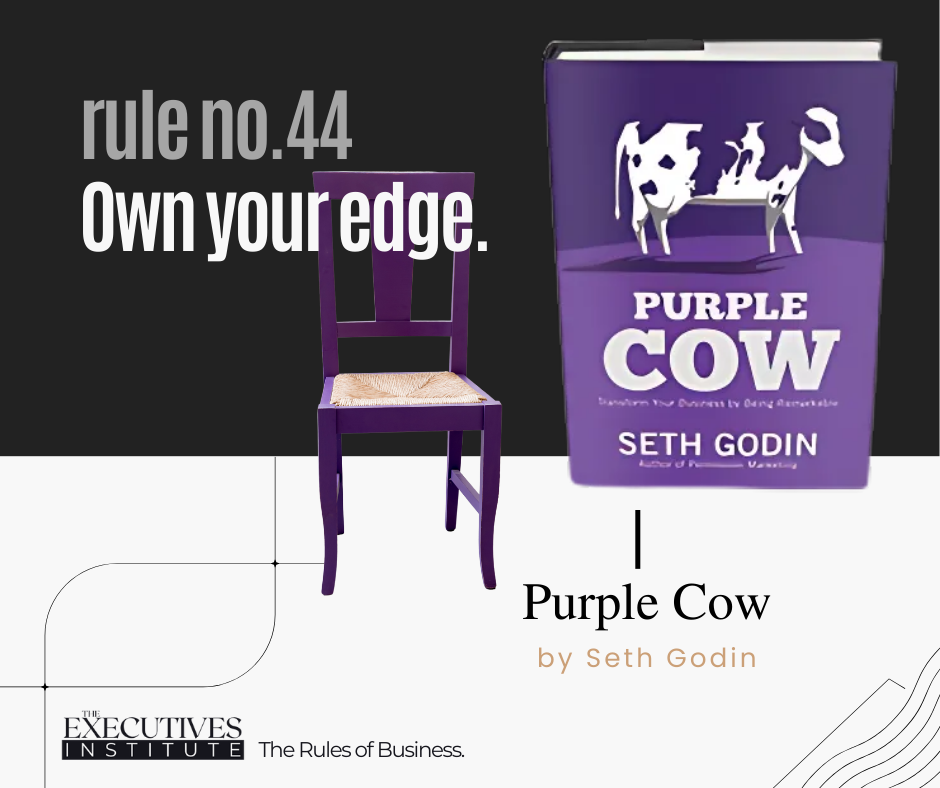
WEEK 46 RECOMMENDED READING: Purple Cow by Seth Godin
“In a crowded marketplace, fitting in is failing. In a busy marketplace, not standing out is the same as being invisible.”
— Seth Godin, Purple Cow
Congratulations! You’ve learned that the silent killers of a business aren’t the complex problems—they’re the obvious, neglected ones. Complacency, comfort, and hesitation compound quietly, while profit, reputation, and your edge demand constant attention. The bottleneck is always at the top, and your choices echo through every corner of the organization.
Closing this chapter doesn’t mean the work is done. It means you now see the traps, recognize the pressure points, and know where to focus to protect what matters most. Avoid the easy mistakes, sharpen your edge, and stay vigilant—because in business, survival favors the leaders who confront the obvious before it becomes unavoidable.
Up Next: Chapter 12 – Reflection & Recommitment
What will you carry forward? What will you leave behind?
After the grind comes clarity. Not everything deserves to go with you into the next chapter. In a world that rewards noise, focus becomes your greatest competitive edge.
This final chapter is about pressing pause, not to slow down—but to get sharper. Recommit to what matters most: trust, authenticity, boundaries, generosity. Let go of the rest. Because growth isn’t a straight line. But if you reflect with intention, it becomes a story worth telling. VISIT CHAPTER 12
